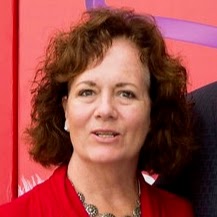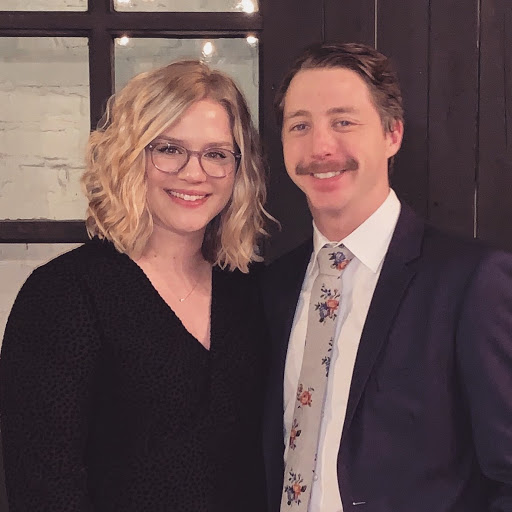Mary H O'Neill
age ~90
from Goleta, CA
- Also known as:
-
- Mary Helen O'Neill
- Mary Trustees Neill
- Mary Te Neill
- Mary Survivors Neill
- Francis L O'Neill
Mary O'Neill Phones & Addresses
- Goleta, CA
- Cheyenne, WY
- San Diego, CA
- 7879 Langlo Ranch Rd, Goleta, CA 93117 • (805)4551473
Work
-
Position:Construction and Extraction Occupations
Education
-
Degree:Graduate or professional degree
Emails
Us Patents
-
Multicolor Staring Missile Sensor System
view source -
US Patent:6946647, Sep 20, 2005
-
Filed:Aug 10, 2000
-
Appl. No.:09/636100
-
Inventors:Mary Dominique O'Neill - Santa Barbara CA, US
William Hale Wellman - Santa Barbara CA, US -
Assignee:Raytheon Company - Waltham MA
-
International Classification:G02B006/06
-
US Classification:2502272, 250554
-
Abstract:A sensor system for viewing the light energy of a scene has an imaging detector which converts incident light energy into an electrical signal. Two colors are separately imaged by the detector in two imaging regions. The imaging system for each color includes a color filter positioned between the scene and the respective region of the detector, an optical train that focuses filtered color scene energy, and an optical fiber bundle having an input end that receives the respective color scene energy from the optical train and an output end that directs the color scene energy onto the respective region of the detector using a nonlinear mapping. The optical fiber bundle is formed of a plurality of optical fibers wherein each of the optical fibers has an input shape and size at its input end and an output shape and size at its output end. The output shape and size are different from the input shape and size. The sensor system further includes an electronic device operable to read the electrical signal of the detector, and image-processing electronics.
-
Method For Analyzing Output Data Of Array Subelements Of An Imaging Segmented Array
view source -
US Patent:7586075, Sep 8, 2009
-
Filed:Mar 1, 2004
-
Appl. No.:10/790894
-
Inventors:Mary Morabito O'Neill - Santa Barbara CA, US
Gregory K. Pierce - Santa Barbara CA, US
William H. Wellman - Santa Barbara CA, US -
Assignee:Raytheon Company - Waltham MA
-
International Classification:H01L 27/00
-
US Classification:2502081, 2502036
-
Abstract:A position of a feature in a scene is located by forming an image of the feature using a segmented array having a plurality of array subelements. Each of the array subelements has an output signal. The output signals from at least two spatially adjacent array subelements are cooperatively analyzed to establish a data set reflective of an extent to which output signals responsive to the image of the feature are produced from exactly one or from more than one of the adjacent array subelements. The data set is used to reach a conclusion as to a location of the image of the feature on the segmented array. Increased positional accuracy is attained with no loss of sensitivity.
-
Obscuration Method For Reducing The Infrared Signature Of An Object
view source -
US Patent:7624666, Dec 1, 2009
-
Filed:Jul 8, 2003
-
Appl. No.:10/615133
-
Inventors:Mary Morabito O'Neill - Santa Barbara CA, US
William H. Wellman - Santa Barbara CA, US -
Assignee:Raytheon Company - Waltham MA
-
International Classification:B64D 1/18
-
US Classification:89 111
-
Abstract:An object such as an aircraft in flight is obscured from infrared detection when viewed from an external viewing location. The method includes providing the object having an externally viewable hot region associated therewith, wherein the hot region has a temperature greater than 150 C. A source of an obscuring agent is provided, wherein the obscuring agent comprises a mixture of carbon dioxide gas and water vapor. The obscuring agent is ejected from a dispensing location so as to flow between the hot region and the external viewing location. The obscuring agent has a temperature of less than that of the hot region.
-
Imaging Sensor System With Staggered Arrangement Of Imaging Detector Subelements, And Method For Locating A Position Of A Feature In A Scene
view source -
US Patent:7807951, Oct 5, 2010
-
Filed:Mar 1, 2004
-
Appl. No.:10/790889
-
Inventors:Mary Morabito O'Neill - Santa Barbara CA, US
Gregory K. Pierce - Santa Barbara CA, US
William H. Wellman - Santa Barbara CA, US -
Assignee:Raytheon Company - Waltham MA
-
International Classification:H01L 27/00
-
US Classification:2502081, 348315, 348340
-
Abstract:An imaging sensor system includes an optics system that images a point feature of a scene at an image plane with a blur-circle image having a blur diameter, and a detector array at the image plane. Special array patterns and signal detector logic are used to improve the accuracy of the determination of the object location. In one form, the detector array is a one-dimensional detector array comprising a plurality of detector subelements each having a width of from about to about 5 blur diameters, and a length of n blur diameters. Each detector subelement overlaps each of two adjacent detector subelements along their lengths. An overlap of each of the two adjacent detector subelements is m blur diameters, and a center-to-center spacing of each of the two adjacent detector subelements is nblur diameters. The value of n is equal to about 3m, and the value of m is equal to about n/2. In another form, the detector is a two-dimensional detector array of detector subelements.
-
Method For Protecting An Aircraft Against A Threat That Utilizes An Infrared Sensor
view source -
US Patent:20030205126, Nov 6, 2003
-
Filed:May 3, 2002
-
Appl. No.:10/139005
-
Inventors:Mary O'Neill - Santa Barbara CA, US
-
International Classification:B64D001/04
F41F005/00 -
US Classification:089/001110
-
Abstract:A method for protecting an aircraft against a threat that utilizes an infrared sensor includes providing a plurality of dispensable infrared sources transported in an infrared-source dispenser with the aircraft. A set of infrared-emitting properties of the infrared sources is selected responsive to a set of infrared detecting characteristics of the infrared sensor. A modulated pattern of the infrared sources is dispensed from the infrared-source dispenser responsive to at least one of the set of infrared detecting characteristics of the infrared sensor, and a geometric engagement scenario of the aircraft and the threat.
-
Autofocus System And Autofocus Method For Focusing On A Surface
view source -
US Patent:20150168705, Jun 18, 2015
-
Filed:Nov 12, 2014
-
Appl. No.:14/539962
-
Inventors:- Las Vegas NV, US
Mary Morabito O'Neill - Santa Barbara CA, US -
International Classification:G02B 21/36
H04N 5/232 -
Abstract:An autofocus system includes an imaging device, a lens system and a focus control actuator that is configured to change a focus position of the imaging device in relation to a stage. The electronic control unit is configured to control the focus control actuator to a plurality of predetermined focus positions, and activate the imaging device to obtain an image at predetermined positions and then apply a spatial filter to the obtained images. This generates a filtered image for the obtained images. The control unit determines a focus score for the filtered images such that the focus score corresponds to a degree of focus in the obtained images. The control unit identifies a best focus position by comparing the focus score of the filtered images, and controls the focus control actuator to the best focus position corresponding to the highest focus score.
Lawyers & Attorneys

Mary S O'Neill - Lawyer
view sourceLicenses:
New York - Currently registered 1977
Education:
Boston University School of Law

Mary O'Neill, San Diego CA - Lawyer
view sourceOffice:
Law Offices of Robert A. Stack
4445 Eastgate Mall, Suite 200, San Diego, CA 92121
4445 Eastgate Mall, Suite 200, San Diego, CA 92121
Phone:
(858)9521260 (Phone)
Specialties:
Eminent Domain
Inverse Condemnation
Tax Assessment
Tax Appeals
Probate
Civil Litigation
Trial Practice
Trusts & Estates
Inverse Condemnation
Tax Assessment
Tax Appeals
Probate
Civil Litigation
Trial Practice
Trusts & Estates
ISLN:
904682913
Admitted:
1981
University:
University of California at Irvine, B.A., 1978
Law School:
Southwestern University, J.D., cum laude, 1981
Links:
Site
Biography:
Mary L. O'Neill, Esq. was admitted to the State Bar in 1981. She graduated from the University of California with a bachelor of arts degree, and she graduated from Southwestern University School of La...

Mary O'Neill - Lawyer
view sourceOffice:
Mary Ann O'Neill Attorney at Law
ISLN:
913568796
Admitted:
1997
Resumes

Mary O'neill Atlanta, GA
view sourceWork:
Delta Air Lines
2014 to 2000
Marketing Communication Consultant - Contract role VML, Inc
2014 to 2014
Account Director - Kimberly Clark IN MARKETING SERVICES
2013 to 2014
Account Director - Newell Rubbermaid brands ON TRACK CONSULTING LLC
2010 to 2013
Marketing/PR Account Director THE COCA-COLA COMPANY
2006 to 2010
Global Training Consultant THE COCA-COLA COMPANY
2004 to 2006
Senior Customer Marketing Manager THE COCA-COLA COMPANY
2003 to 2004
Senior Brand Manager - Hydration Business Unit-DASANI THE COCA-COLA COMPANY
Boston, MA
2001 to 2003
Senior Brand Development Manager
2014 to 2000
Marketing Communication Consultant - Contract role VML, Inc
2014 to 2014
Account Director - Kimberly Clark IN MARKETING SERVICES
2013 to 2014
Account Director - Newell Rubbermaid brands ON TRACK CONSULTING LLC
2010 to 2013
Marketing/PR Account Director THE COCA-COLA COMPANY
2006 to 2010
Global Training Consultant THE COCA-COLA COMPANY
2004 to 2006
Senior Customer Marketing Manager THE COCA-COLA COMPANY
2003 to 2004
Senior Brand Manager - Hydration Business Unit-DASANI THE COCA-COLA COMPANY
Boston, MA
2001 to 2003
Senior Brand Development Manager
Education:
FIELDING UNIVERSITY
Santa Barbara, CA
2013
Master of Arts in Organizational Management & Development WEST VIRGINIA UNIVERSITY
Morgantown, WV
Master's in Marketing WAKE FOREST UNIVERSITY
Winston-Salem, NC
Master of Business Administration in Marketing BOSTON COLLEGE
Chestnut Hill, MA
Bachelor of Arts in economics
Santa Barbara, CA
2013
Master of Arts in Organizational Management & Development WEST VIRGINIA UNIVERSITY
Morgantown, WV
Master's in Marketing WAKE FOREST UNIVERSITY
Winston-Salem, NC
Master of Business Administration in Marketing BOSTON COLLEGE
Chestnut Hill, MA
Bachelor of Arts in economics
Medicine Doctors

Mary J. O'neill
view sourceSpecialties:
Diagnostic Radiology
Work:
Beverly Radiology Associates
85 Herrick St, Beverly, MA 01915
(978)9223000 (phone), (978)9217011 (fax)
85 Herrick St, Beverly, MA 01915
(978)9223000 (phone), (978)9217011 (fax)
Education:
Medical School
Harvard Medical School
Graduated: 1991
Harvard Medical School
Graduated: 1991
Languages:
English
Description:
Dr. O'neill graduated from the Harvard Medical School in 1991. She works in Beverly, MA and specializes in Diagnostic Radiology. Dr. O'neill is affiliated with Addison Gilbert Hospital and Beverly Hospital.

Mary R. O'neill
view sourceSpecialties:
General Surgery
Work:
Penn Medicine Washington Square
800 Walnut St FL 20, Philadelphia, PA 19107
(215)8298455 (phone), (215)8298454 (fax)
800 Walnut St FL 20, Philadelphia, PA 19107
(215)8298455 (phone), (215)8298454 (fax)
Languages:
English
Spanish
Spanish
Description:
Ms. O'Neill works in Philadelphia, PA and specializes in General Surgery. Ms. O'Neill is affiliated with Hospital Of The University Of Pennsylvania.
Name / Title
Company / Classification
Phones & Addresses
Health Care Director
Southern California Presbyterian Homes
Residential Care Services Skilled Nursing Care Facility
Residential Care Services Skilled Nursing Care Facility
7450 Olivetas Ave, La Jolla, CA 92037
(858)4544201, (858)4505241
(858)4544201, (858)4505241
President,Vice President
S.O.S. RANCH LTD
Deputy Director Ofc Secretary Div Fin
Maryland Department of Budget and Management
General Government · Public Finance/Taxation/Monetary Policy · Membership Organization
General Government · Public Finance/Taxation/Monetary Policy · Membership Organization
(410)2607041, (410)2607471, (410)2607039, (410)7676218
Flickr
Googleplus

Mary O'neill
Work:
Forum of Regional Associations of Grantmakers - Director of Programs (2005)
Education:
University of Pittsburgh - Public and International Affaris, Bradley University - International Studies, Maria High School, St. Rita Grammar School

Mary O'neill
Work:
Baird & Warner - Referral Coordinator
Education:
Marquette University - Communication, Public Relations

Mary O'neill
Education:
Bensalem high, Gordon Phillips beauty - Beautician
Relationship:
Married
Bragging Rights:
I have 6 girls and a grandson with another on the way !

Mary O'neill
Work:
Atomic Object

Mary O'neill
Education:
University of Oklahoma - International Business

Mary O'neill

Mary O'neill

Mary O'neill
Plaxo

Mary Oneill
view sourceASAT
Myspace
Youtube
Get Report for Mary H O'Neill from Goleta, CA, age ~90













